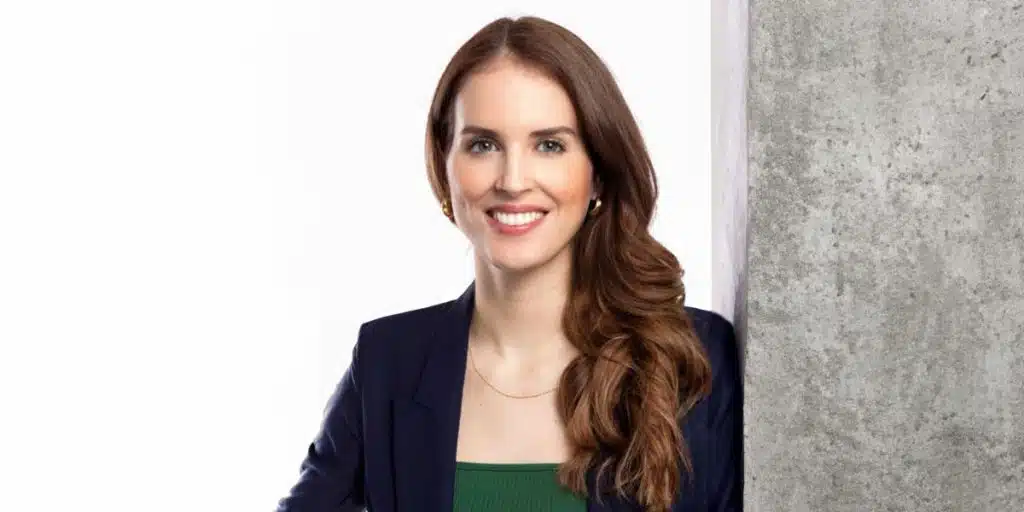As a specialist in radiology and scientist (senior physician at the Klinikum rechts der Isar, TU Munich), Priv.-Doz. Dr. Lisa Adams has expertise in the application of artificial intelligence in radiology. She has experience in preclinical and clinical research and is dedicated to clinical-translational research projects aimed at improving the diagnostic capabilities of radiological reporting and imaging.
Together with your team, you have developed an AI model that can identify cardiac devices on chest X-ray images – even on smartphone photos. In emergencies, it can be crucial to quickly identify which pacemaker or defibrillator a patient is wearing. How exactly does this work and how long did you work on developing the model?
Our AI model is based on a U-Net architecture. It was developed to segment and classify cardiac implantable electronic devices on chest X-ray images. The special feature is that we used both DICOM and smartphone images of X-ray images. The development of the model, from data collection to validation, took more than a year.
How many images did you record in your study?
We used a total of 13,393 images. Of these, 2,321 were high-resolution DICOM X-ray images of 897 patients and 11,072 were smartphone images of X-ray images. The smartphone images were taken with five different cell phones to ensure high variability.
How powerful is your model?
It achieved a mean Dice coefficient of 0.936 for segmentation, 94.36% accuracy for manufacturer classification and 84.21% accuracy for model classification. These results show that our system can not only reliably localize devices, but also precisely determine manufacturers and models.
Did you work in an international team and how big was your team?
Our study was conducted at the Charité – Universitätsmedizin Berlin. Our core team consisted of about 10 people, including radiologists and software developers. Although we were not an international research team in the classical sense, our project benefited from the diversity of our staff with colleagues from different nations.
What other projects are you currently working on?
I am currently working on several research projects that focus on the application of AI in radiological diagnostics. One focus is on the application of large language models in radiology and the improvement of early detection and characterization of tumors using multimodal imaging. I am also involved in the development of AI-supported clinical decision support systems for clinical practice.
How do you generally assess the potential of AI in medical imaging across different image sources?
I consider the potential of AI in medical imaging to be very great. Our work shows how AI can integrate and analyze different image sources. In my opinion, AI will improve diagnostic accuracy and efficiency, at least in the long term, by recognizing complex patterns. In the future, I see AI as an indispensable assistant for radiologists, optimizing workflows and improving patient care.
Do you think we have enough support in Europe for projects like yours?
Support in Europe is growing steadily, but there is still room for improvement. The EU AI Act is a step towards a uniform framework, but we must carefully consider how to promote innovation while ensuring high safety standards. A more differentiated view of medical AI applications would be desirable. In economic and regulatory terms, we need to find a balanced approach that strengthens Europe’s competitiveness without neglecting ethical principles.
How will AI develop in the healthcare sector over the next few years? Can you give us your assessment?
I assume that the development of AI in the healthcare sector will be multi-faceted. We can look forward to advances in diagnostics and treatment planning, at least in the medium term. At the same time, we face the challenge of giving doctors a deeper understanding of the decision-making processes of these systems. Data protection and the definition of responsibilities in AI-supported decisions will remain important topics of discussion. Our goal must be to integrate AI in such a way that it complements and strengthens the human component in medicine rather than replacing it.
What are the biggest challenges in integrating AI into everyday radiology?
In my view, a key challenge lies in harmonizing AI systems with our established workflows and IT infrastructures. The rapid pace of development also requires us radiologists to undergo continuous further training. The legal and ethical issues should also not be underestimated, particularly with regard to responsibilities in AI-supported decisions. Overall, I see AI as a promising tool whose successful integration requires a careful balance between innovation and proven clinical practice.

